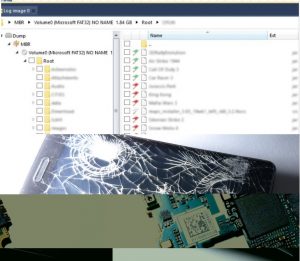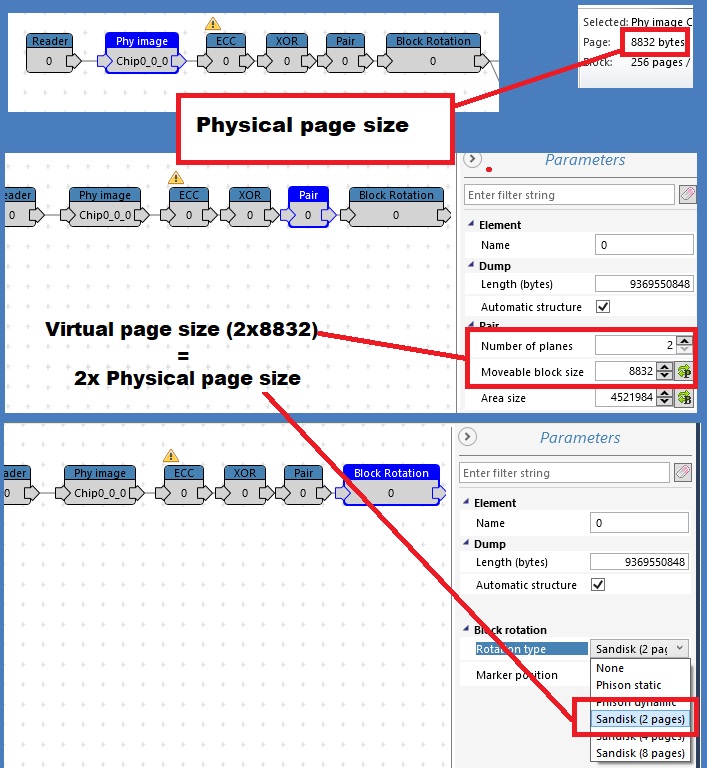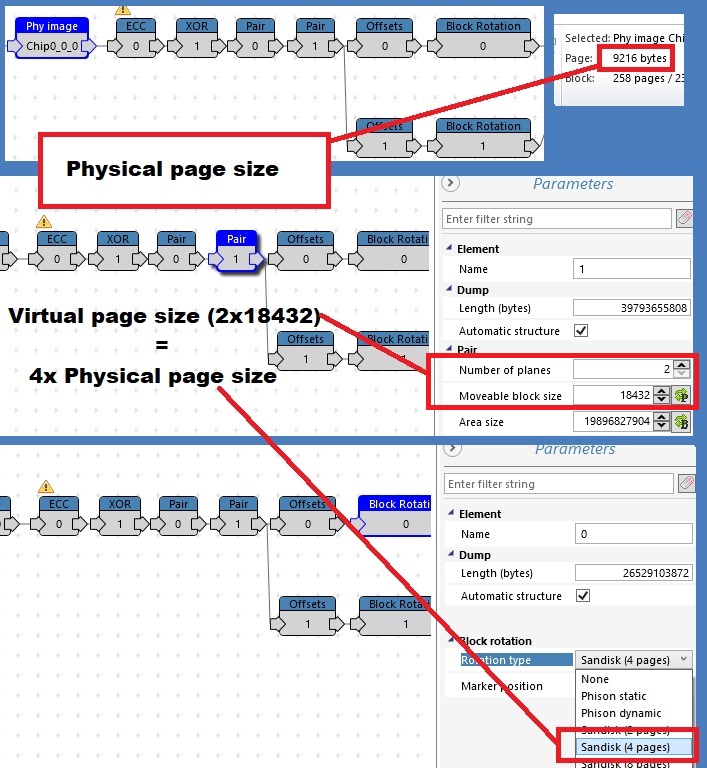Block Rotation element for Phison and Sandisk devices
The VNR has a user-friendly Block Rotation element, in almost all Phison and Sandisk cases that have rotation inside blocks. It is a simple way to reverse it.
To make an element even easier to use, we will explain how to determine what kind of rotation you need to use.

The first question that arises is how to determine if we are dealing with block rotation or not?
Sometimes we have a nice looking dump, no bit errors and all blocks in markers table. However, we can still find damaged files in the file structure, or we can find specific pictures using file carver, where the pictures appear as if one image is made up of two or more different pictures. Then the device is probably using block rotation.
Sometimes we have a nice looking dump, no bit errors and all blocks in markers table. However, we can still find damaged files in the file structure, or we can find specific pictures using file carver, where the pictures appear as if one image is made up of two or more different pictures. Then the device is probably using block rotation.
The next question is how to use this element?
Just join the element and choose the type of rotation. At now, our new Block Rotation element has two controllers supported: Phison and Sandisk.
Phison controller – types of rotation
1) Static Phison rotation
Almost all Phison controllers have a similar page structure.
The page structure has 1024 of data area at the beginning and the second area is 8 bytes of Spare Area. Of course, we can find some exceptions, but in case of Phison rotation devices, the location and size of the SA should be the same or similar.
The page structure has 1024 of data area at the beginning and the second area is 8 bytes of Spare Area. Of course, we can find some exceptions, but in case of Phison rotation devices, the location and size of the SA should be the same or similar.
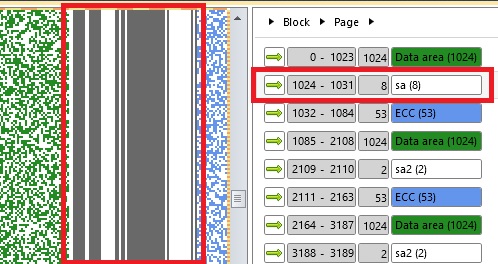
To determine which type of Phison rotation we should choose, it is necessary to check the SA. The answer is in bytes at positions 1028 and 1030.1031. Byte 1028 is always static and has the value of FF in HEX, the last two bytes are not static. Here is the first type – “Static rotation”
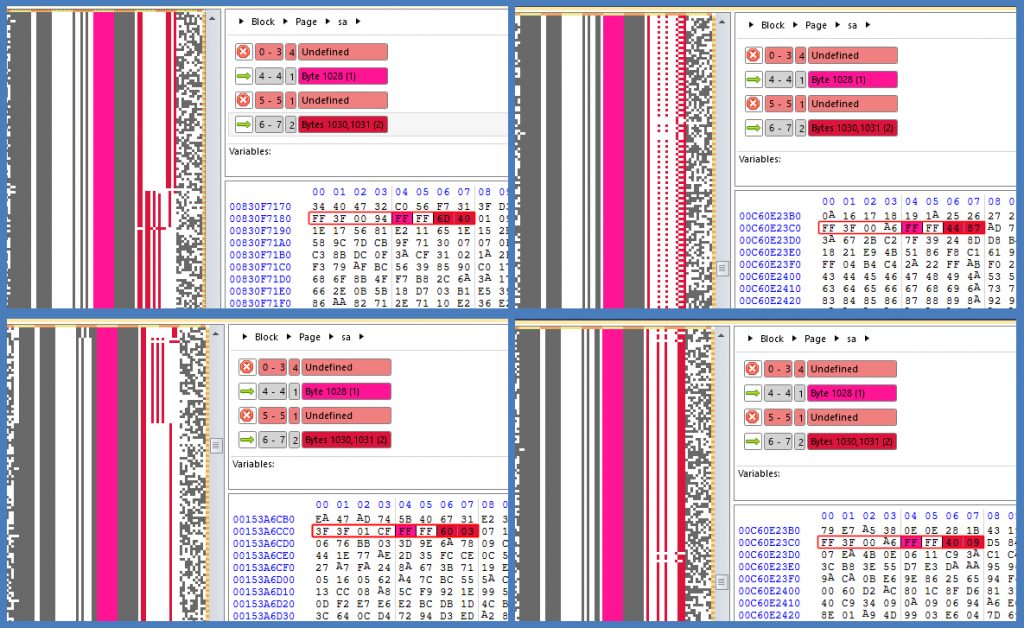
2) Dynamic Phison rotation
The second type of Phison rotation is “Dynamic rotation” and is sometimes difficult to find. Devices with dynamic rotation have almost the same SA as static rotation devices. 1030.1031 is not static, but 1028 byte is not always FF. If the dump has blocks with 83 in HEX value at 1028 byte position, there is probably a dynamic Phison rotation.
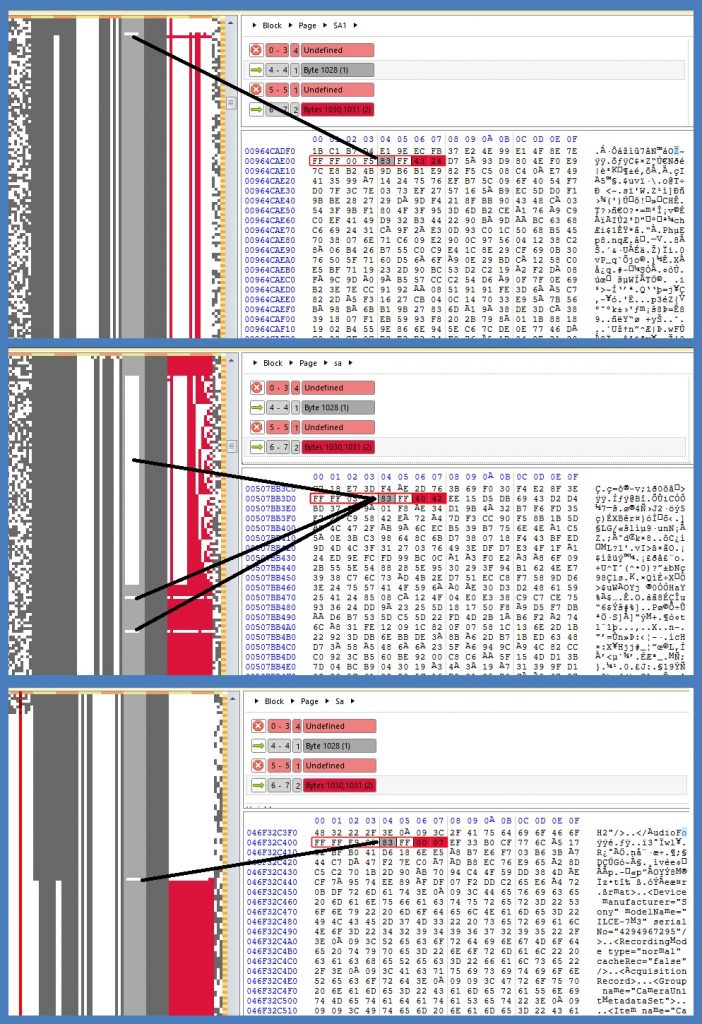
Let’s look at one example of the results before and after dynamic Phison rotation:
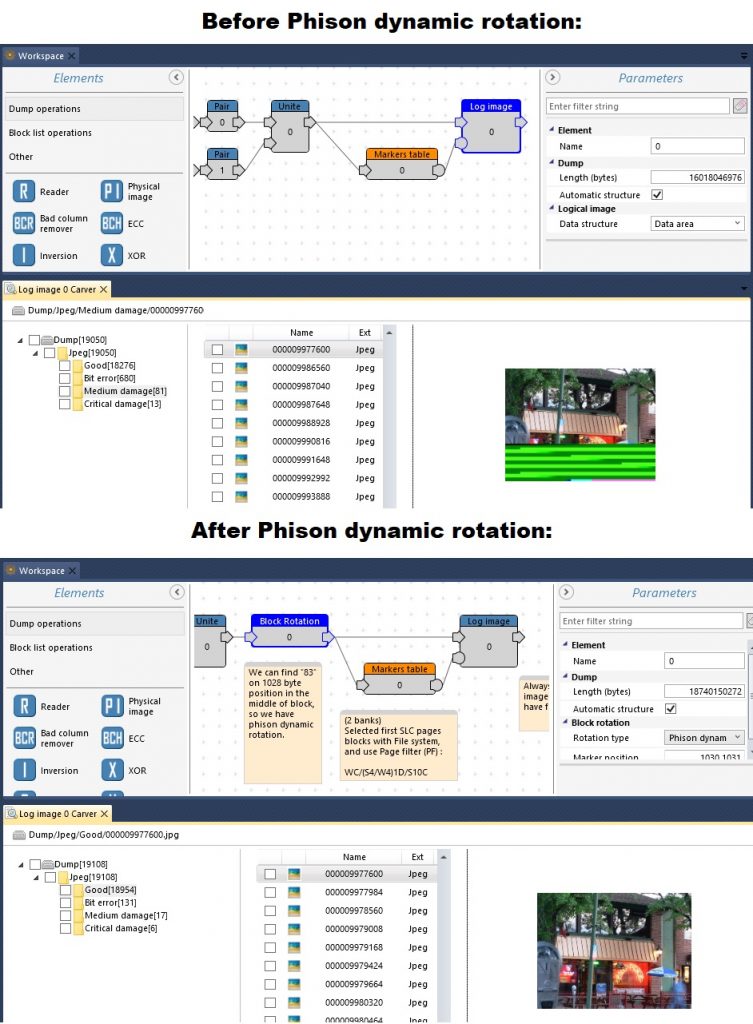
Sandisk controller – types of rotation
The Block Rotation element has three types for Sandisk devices, and the way to select the correct type is to find the virtual page size. Below we have provided photos-examples of how to check the virtual page size and what type of rotation we should choose.
1) Two pages type
2) Four pages type
1) Eight pages type

At the end let’s look at the results before and after Sandisk rotation (in this case, two pages type)
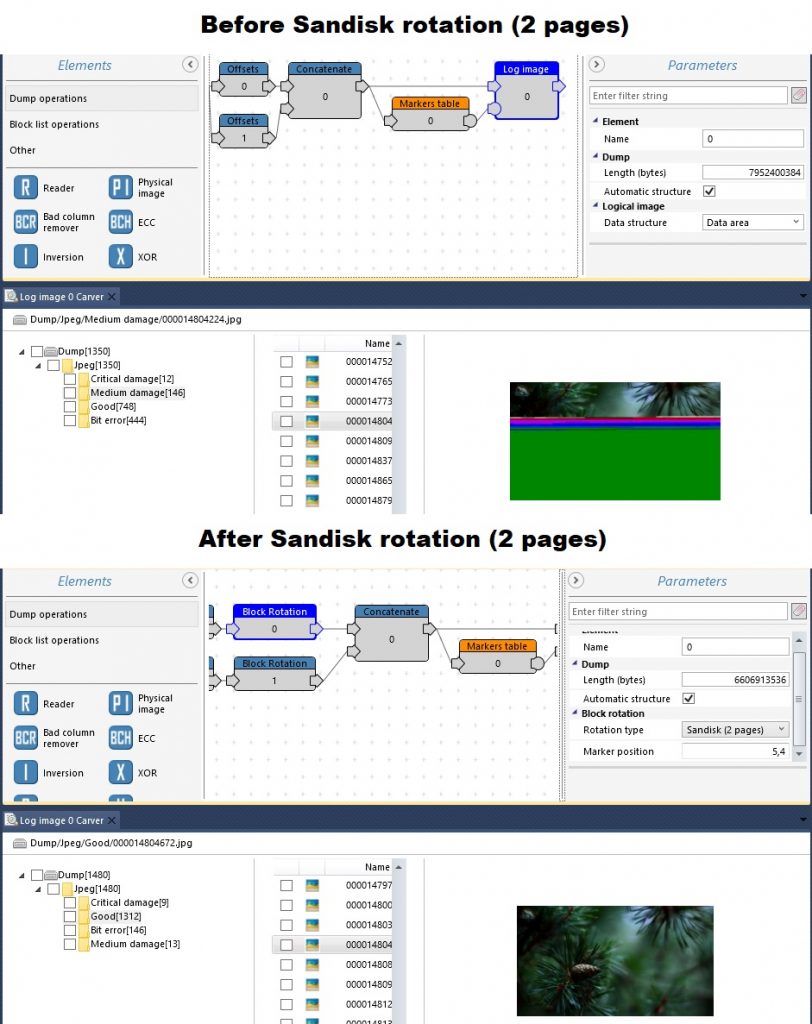
Thank you for reading!
Lukasz Pietrzykowski, Rusolut Team

Thank you for reading!
Lukasz Pietrzykowski, Rusolut Team
Lukasz Pietrzykowski, Rusolut Team
Related Articles
Phison - Double block rotation and SLC block management
The solution step by step It’s been many years since the first NAND controllers were released on the market. Many technological aspects of flash devices have changed since that time, but one thing is certain, along with the multiplied capacity, the ...Phison dynamic XOR
Majority of NAND memory devices that use scrambling algorithms generate their XOR keys statically. When a user writes new data to the NAND chip, the controller transforms this data with the XOR key that is generated every time with the same binary. ...Missing data planes in TSOP48, LGA52, BGA132 and BGA152 Sandisk chips.
This article shows the way how to extract all data from TSOP48, LGA52, and BGA132/152 Sandisk memory chips when the configuration and dump size are correct, but half of the dump is still empty. Usually, if a NAND memory chip has 2 or 4 crystals, ...Case studies
Kingston microSD card recovery with Phison dynamic XOR Here is a case with an unusual solution. In most cases, the Logical Block size is two times bigger than the physical block size. But in this case, the Logical block is three times smaller. For ...Block extraction
Video tutorial Introduction In this little tutorial the procedure of block extraction is briefly explained. Blocks are second most basic structures in NAND memory dumps and their length defines (in most cases) length of XOR key, for this reason it is ...
